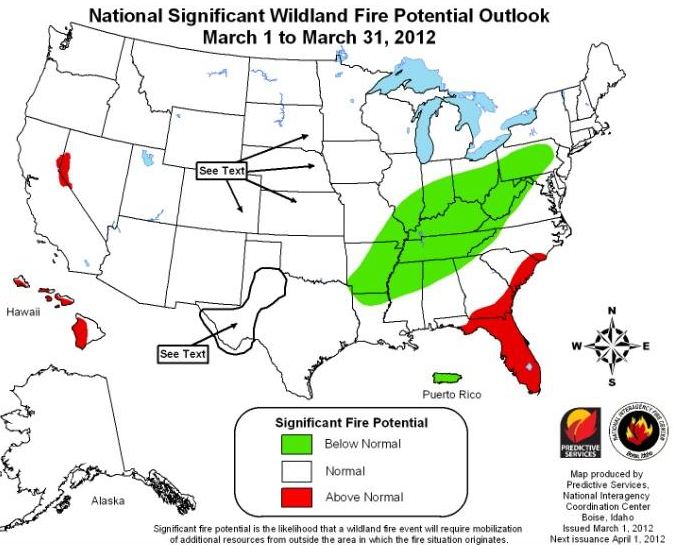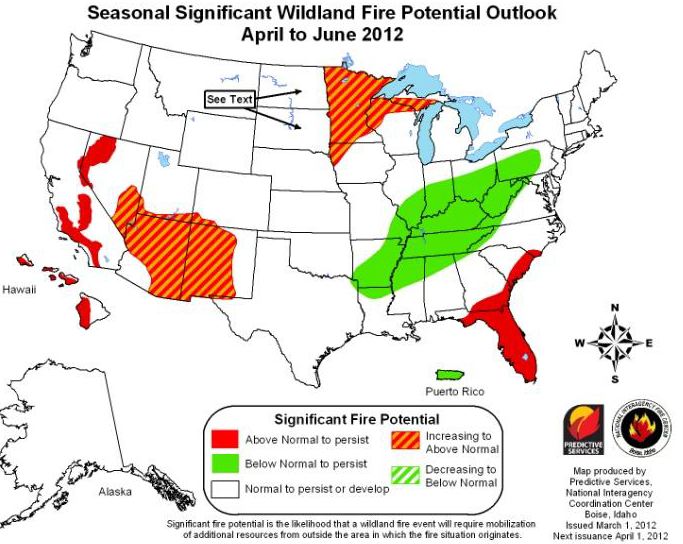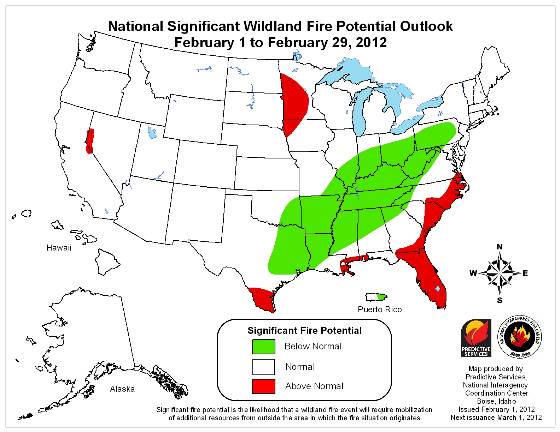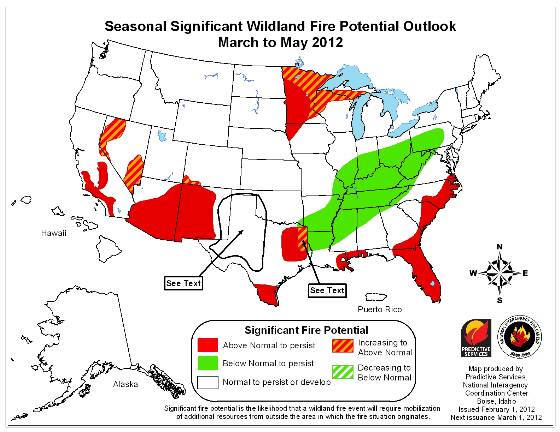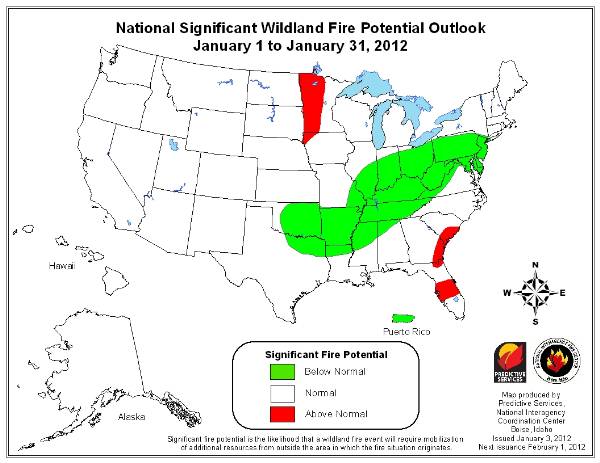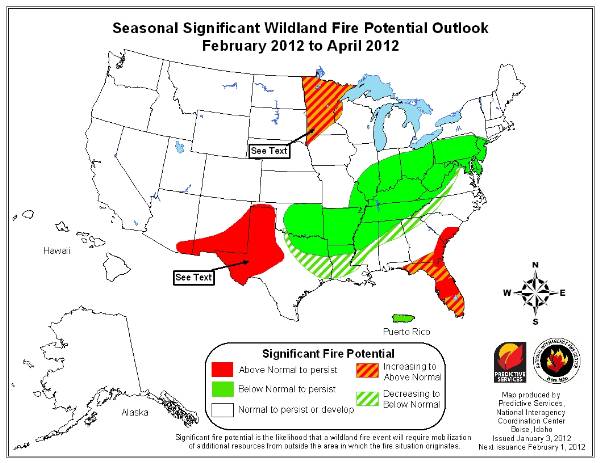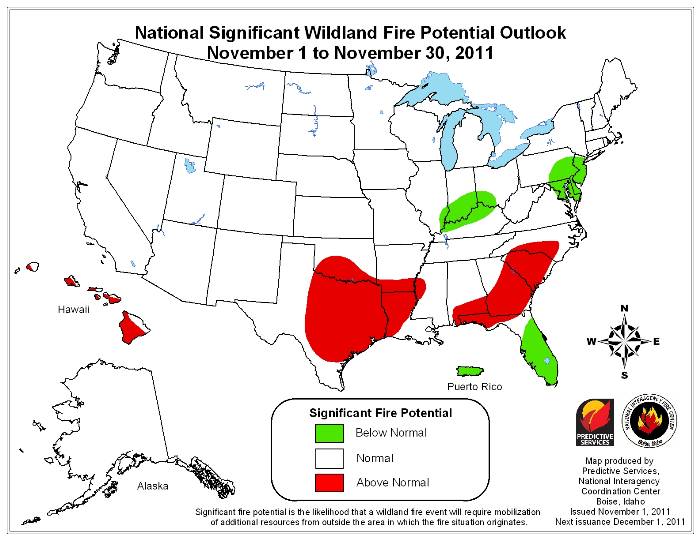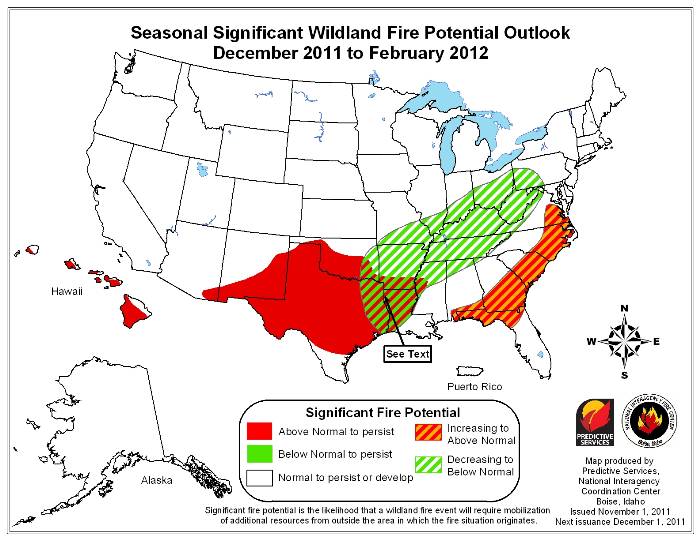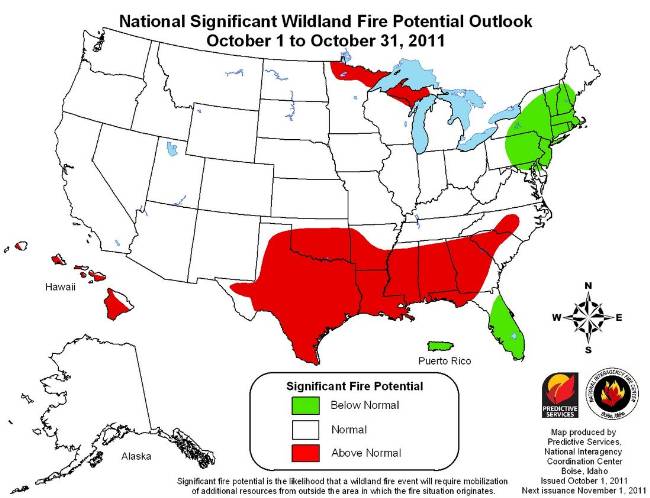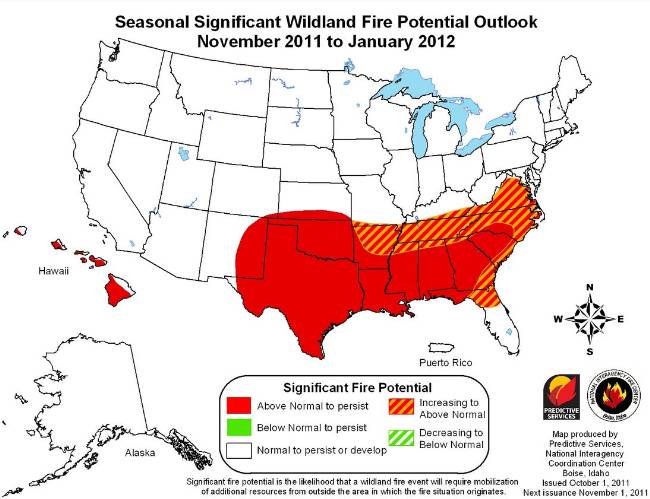The Predictive Services section at the National Interagency Fire Center has issued their National Wildland Significant Fire Potential Outlook for April through July, 2012. If correct, Arizona, New Mexico, Florida, and portions of California and Nevada will experience above normal wildfire potential for the months May through July.
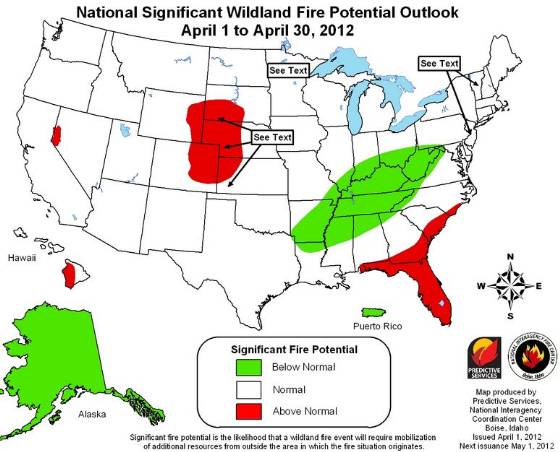
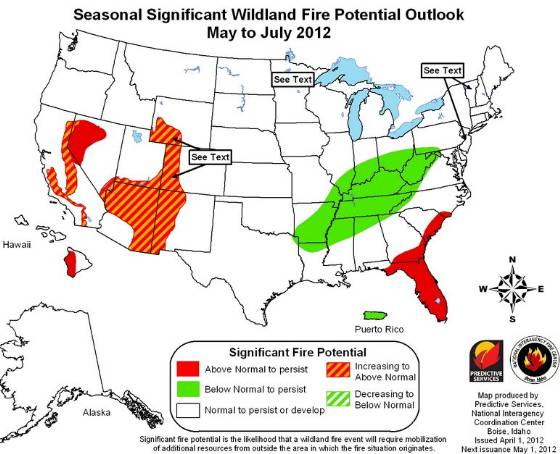
Below is a summary of the wildfire potential:
Significant Fire Potential
- Above Normal Significant Fire Potential is expected along the east coast from near Wilmington, North Carolina, to near Panama City, Florida, including all of the Florida peninsula; most of northwestern Nevada; foothills and inland valleys of southern California; and the lee side of the Hawai’in Islands.
- Significant Fire Potential will increase to above normal in the spring across most of Minnesota, northern Wisconsin, the upper peninsula of Michigan and northwestern Iowa; central and western New Mexico, most of Arizona, southern Nevada, far southern Utah and extreme southwestern Colorado.
- Below Normal Significant Fire Potential is expected for much of the Ohio and Tennessee Valleys, the middle and lower Mississippi Valley, and Puerto Rico. The rest of the country will have normal significant fire potential.
Climate and Drought Conditions
- La Niña will continue to weaken as oceanic trends point to warming of the equatorial Pacific through spring, favoring a neutral or weak El Niño cycle by early summer.
- Warmer than normal temperatures are expected across much of eastern two-thirds of the U.S.in March and transitioning to above normal across just the southern half of the country. Below normal temperatures are expected for the West coast and much of Alaska.
- Precipitation is expected to be below median for most of the southwest, central and southern Plains, and the Gulf coastal region including all of Florida, and southern Alaska. Above median precipitation is expected for the Northwest and northern Rockies, the Upper Midwest, theGreat Lakes region, and the Ohio and mid-Mississippi valleys.
- Drought will persist through much of the lower Atlantic and Gulf coasts, most of the southwestern and south central U.S., most of central and northern California, the western Great Basin, and the upper Mississippi valley. Drought will likely develop across the northern Plains, the eastern Great Basin and central Rockies, and southern California. There will be some improvement in the Northwest, parts of northern California, east Texas, and on the lee sides of the Hawai’in Islands.



